AN APPEAL FOR SUPPORT
- We seek your support to meet expenses relating to formatting of articles and books, maintaining and running the journal through hosting, correrspondences, etc.Please write to the Editor in his e-mail address mthirumalai@comcast.net to find out how you can support this journal.
- Also please use the AMAZON link to buy your books. Even the smallest contribution will go a long way in supporting this journal. Thank you. Thirumalai, Editor.
BOOKS FOR YOU TO READ AND DOWNLOAD FREE!
-
The Effects of Age on the Ability to Learn English As a Second Language ...
Mariam Dadabhai, B.A. Hons. - A STUDY OF THE SKILLS OF READING
COMPREHENSION IN ENGLISH DEVELOPED BY STUDENTS OF STANDARD IX IN THE SCHOOLS IN TUTICORIN DISTRICT, TAMILNADU ...
A. Joycilin Shermila, Ph.D. - A Socio-Pragmatic Comparative Study of Ostensible Invitations in English and Farsi ...
Mohammad Ali Salmani-Nodoushan, Ph.D. - ADVANCED WRITING - A COURSE TEXTBOOK ...
Parviz Birjandi, Ph.D.
Seyyed Mohammad Alavi, Ph.D.
Mohammad Ali Salmani-Nodoushan, Ph.D. - TEXT FAMILIARITY, READING TASKS, AND ESP TEST PERFORMANCE: A STUDY ON IRANIAN LEP AND NON-LEP UNIVERSITY STUDENTS - A DOCTORAL DISSERTATION ...
Mohammad Ali Salmani-Nodoushan, Ph.D. - A STUDY ON THE LEARNING PROCESS OF ENGLISH
BY HIGHER SECONDARY STUDENTS
WITH SPECIAL REFERENCE TO DHARMAPURI DISTRICT IN TAMILNADU ...
K. Chidambaram, Ph.D. - SPEAKING STRATEGIES TO OVERCOME COMMUNICATION
DIFFICULTIES IN THE TARGET LANGUAGE SITUATION - BANGLADESHIS IN NEW ZEALAND ...
Harunur Rashid Khan - THE PROBLEMS IN LEARNING MODAL AUXILIARY VERBS IN ENGLISH AT HIGH SCHOOL LEVEL ...
Chandra Bose, Ph.D. Candidate - THE ROLE OF VISION IN LANGUAGE LEARNING
- in Children with Moderate to Severe Disabilities ...
Martha Low, Ph.D. - SANSKRIT TO ENGLISH TRANSLATOR ...
S. Aparna, M.Sc. - A LINGUISTIC STUDY OF ENGLISH LANGUAGE CURRICULUM AT THE SECONDARY LEVEL IN BANGLADESH - A COMMUNICATIVE APPROACH TO CURRICULUM DEVELOPMENT by
Kamrul Hasan, Ph.D. - COMMUNICATION VIA EYE AND FACE in Indian Contexts by
M. S. Thirumalai, Ph.D. - COMMUNICATION
VIA GESTURE: A STUDY OF INDIAN CONTEXTS by M. S. Thirumalai, Ph.D. - CIEFL Occasional
Papers in Linguistics,
Vol. 1 - Language, Thought
and Disorder - Some Classic Positions by
M. S. Thirumalai, Ph.D. - English in India:
Loyalty and Attitudes
by Annika Hohenthal - Language In Science
by M. S. Thirumalai, Ph.D. - Vocabulary Education
by B. Mallikarjun, Ph.D. - A CONTRASTIVE ANALYSIS OF HINDI
AND MALAYALAM
by V. Geethakumary, Ph.D. - LANGUAGE OF ADVERTISEMENTS
IN TAMIL
by Sandhya Nayak, Ph.D. - An Introduction to TESOL:
Methods of Teaching English
to Speakers of Other Languages
by M. S. Thirumalai, Ph.D. - Transformation of
Natural Language
into Indexing Language:
Kannada - A Case Study
by B. A. Sharada, Ph.D. - How to Learn
Another Language?
by M.S.Thirumalai, Ph.D. - Verbal Communication
with CP Children
by Shyamala Chengappa, Ph.D.
and M.S.Thirumalai, Ph.D. - Bringing Order
to Linguistic Diversity
- Language Planning in
the British Raj by
Ranjit Singh Rangila,
M. S. Thirumalai,
and B. Mallikarjun
REFERENCE MATERIAL
- UNIVERSAL DECLARATION OF LINGUISTIC RIGHTS
- Lord Macaulay and
His Minute on
Indian Education - In Defense of
Indian Vernaculars
Against
Lord Macaulay's Minute
By A Contemporary of
Lord Macaulay - Languages of India,
Census of India 1991 - The Constitution of India:
Provisions Relating to
Languages - The Official
Languages Act, 1963
(As Amended 1967) - Mother Tongues of India,
According to
1961 Census of India
BACK ISSUES
- FROM MARCH 2001.
- FROM JANUARY 2002.
- INDEX OF ARTICLES
FROM MARCH, 2001
to JULY 2007. - INDEX OF AUTHORS
AND THEIR ARTICLES
FROM MARCH, 2001
- JULY 2007
- E-mail your articles and book-length reports in Microsoft Word to mthirumalai@comcast.net.
- Contributors from South Asia may send their articles to
B. Mallikarjun,
Central Institute of Indian Languages,
Manasagangotri,
Mysore 570006, India or e-mail to mallikarjun@ciil.stpmy.soft.net. PLEASE READ THE GUIDELINES GIVEN IN HOME PAGE IMMEDIATELY AFTER THE LIST OF CONTENTS. - Your articles and booklength reports should be written following the MLA, LSA, or IJDL Stylesheet.
- The Editorial Board has the right to accept, reject, or suggest modifications to the articles submitted for publication, and to make suitable stylistic adjustments. High quality, academic integrity, ethics and morals are expected from the authors and discussants.
Copyright © 2007
M. S. Thirumalai
NATIONAL ANTHEMS OF SOUTH ASIAN NATIONS
M. S. Thirumalai, Ph.D.
Sixtieth Anniversary of Independence
Next month, India and Pakistan will be celebrating the 60th anniversary of their independence from the British rule. This short article is a tribute to the sagacity of these two great nations, whose peoples are united in many ways including culture, religion, language, social structure, likes and dislikes, (and should I say, by a desire to retain English, the language of the past rulers of most of these peoples, in one form or the other!).
Along with these nations that celebrate their sixtieth anniversary of political freedom, we also salute the other great South Asian nations - Bangladesh, Bhutan, Maldives, Nepal and Sri Lanka. Peoples of these nations share many commonalities, and one really hopes that these commonalities will pave the way for better appreciation of one another and foster love between nations.
Indian National Anthem
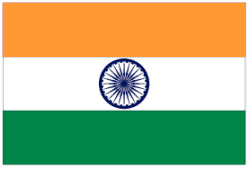
Was it written in praise of the visiting British Monarch, was it written in praise of Indian Motherland, or was it written in praise of the Universal Soul?
Written in Bengali by Rabindranath Tagore, the song was sung by the poet in the Calcutta Session of the Indian National Congress on December 27, 1911. The annulment of Partition was announced with a royal declaration in 1911. So, naturally there was jubilation that the Partition of Bengal was a thing of the past. (For the political atmosphere of this period, please click on THE ROOTS OF LINGUISTIC REORGANIZATION OF INDIAN PROVINCES.
Calcutta newspapers reported that Rabindranath wrote and sang this poem in praise of the Emperor George V whose coronation darbar was held in Delhi. On the other hand, the poet himself was reported to have repudiated this assumption and declared that the poem was in praise of the God of Destiny of India, "That Lord of Destiny, that Reader of the Collective Mind of India, that Perennial Guide."
It is more likely that the faith of the Brahmo Samajist poet, Rabindranath, in universalism and in One Universal Supreme Being, which closely resembles the modern interpretation of Vedanthic Universal Soul, had greatly influenced the thoughts and words of this anthem. The recognition that the glory of God is reflected in all His creation, and all creation sings the praise of God is certainly Biblical as reflected in Psalm 19:1, which is also an integral part of Unitarian Church, closer to Brahmo Samaj.
A translation of the National Anthem in English and non-Hindi and non-Bengali Indian languages was printed in the school textbooks in the past. I believe that this is the case even now. The translation runs like this:
O! Dispenser of India's destiny, thou art the ruler of the minds of all people.
Thy name rouses the hearts of Punjab, Sindh, Gujarat, the Maratha country,
in the Dravida country, Utkala (Orissa) and Bengal;
It echoes in the hills of the Vindhyas and Himalayas,
it mingles in the rhapsodies of the pure waters Jamuna and the Ganges.
They chant only thy name,
They sing only the glory of thy victory,
They seek only thy auspicious blessings.
The salvation of all people waits in thy hand,
thou dispenser of India's destiny.
Victory, Victory, Victory, Victory to thee.
The official version of the National Anthem is in the official language of India, Hindi, which fortunately is much similar to the original Bengali version. When sung by diverse people groups of India, the song takes on special local pronunciations and is sung following the spelling provided in Hindi minus certain phonological values such as aspirated sounds, etc. A Bengali song has taken a Hindi avtar and is sung with myriad pronunciation values - typifying the Indian diversity in its core!
Some years ago, an individual took it on his heart that Sindh must be deleted from the anthem and Kashmir added, since Sindh is no more part of India. (For a discussion on Sindh and Supreme Court of India, please click on Sindh in the Supreme Court, and SIND, SINDHI, AND ETHNIC SLURS Did President Musharraf Really Say that?!.
A basic fact is that this song of Rabindranath was adopted by the Constituent Assembly only in 1950 when Sindh was no more part of Indian Union and Kashmir dispute was fresh in the minds of all. The sagacity of Indian leadership chose not to look at this inspiring poem and song as something that should be subjected to dissection as and when the Government or even Parliament wanted to change, delete from, or add words to it.
In addition, some of the major linguistic territorial components of India are mentioned, and this also adds to the emphasis on diversity while signifying unity among these components.
We will present the proceedings of the Constituent Assembly of India on this issue, possibly in our next issue.
Yet, the question as to who is being referred to as the Destiny of India - God, Nature, Spirit of India, or Mother India - will continue to be a fascination among the generations to come, and based on the sides you take, the need for change or retention will be debated, especially when years ago another song from another great Bengali writer was considered to be the best and most appropriate, and used in all political platforms!
The National Anthem of Pakistan

A report in the noted Indian secular daily newspaper, The Hindu, gave an interesting story about the first national anthem of Pakistan. Luv Puri, a senior journalist attached to the The Hindu wrote from Jammu that Jagannath Azad, a Urdu knowing Hindu, was the composer of the first national anthem of Pakistan. Luv Puri wrote,
"Days before his death last year, Azad recalled, in an interview to this correspondent, the circumstances under which he was asked by Jinnah to write Pakistan's national anthem: 'In August 1947, when mayhem had struck the whole Indian subcontinent, I was in Lahore working in a literary newspaper. All my relatives had left for India and for me to think of leaving Lahore was painful. I decided to take a chance and stay on for some time. My Muslim friends requested me to stay on and took responsibility of my safety. On the morning of August 9, 1947, there was a message from Pakistan's first Governor-General, Mohammad Ali Jinnah. It was through a friend working in Radio Lahore who called me to his office. He told me `Quaid-e-Azam wants you to write a national anthem for Pakistan.' I told them it would be difficult to pen it in five days and my friend pleaded that as the request has come from the tallest leader of Pakistan, I should consider his request. On much persistence, I agreed.'"Why him? 'The answer to this question,' Azad said in the interview, 'has to be understood by recalling the inaugural speech of Jinnah Sahib as Governor General of Pakistan. He said: `You will find that in the course of time, Hindus will cease to be Hindus and Muslims will cease to be Muslims, not in the religious sense because that is the personal faith of each individual, but in the political sense as citizens of the state.' It is for historians and analysts to judge what made Jinnah Sahib make this speech. But clearly as understood by the speech was the fact he wanted to create a secular Pakistan, despite the fact the whole continent, particularly the Punjab province, had seen a human tragedy in the form of communal massacres. Even I was surprised when my colleagues in Radio Pakistan, Lahore approached me. I asked them why Jinnah Sahib wanted me to write the anthem. They confided in me that `Quaid-e-Azam wanted the anthem to be written by an Urdu-knowing Hindu.' Through this, I believe Jinnah Sahib wanted to sow the roots of secularism in a Pakistan where intolerance had no place'" (The Hindu, dated June 19, 2005. www.hindu.com).
This first national anthem was replaced by another anthem, which is the current one. The government approved this anthem in August 1954. Abu-Al-Asar Hafeez Jullandhuri (1900- 1982) wrote the words, and Ahmed Ghulamali Chagla (1902-1953) set the music.
The English translation of this almost wholly Persian anthem is as follows:
Blessed be sacred land,
Happy be bounteous realm,
Symbol of high resolve,
Land of Pakistan.
Blessed be thou citadel of faith.
The Order of this Scared Land
Is the might of the brotherhood of the people.
May the nation, the country, and the State
Shine in glory everlasting.
Blessed be the goal of our ambition.
This flag of the Crescent and the Star
Leads the way to progress and perfection,
Interpreter of our past,
glory of our present,
Inspiration of our future,
Symbol of Almighty's protection.
According to available reports, the National Anthem of Pakistan was selected from 723 competing songs and the prize money was Rs. 10.000. Pakistan's national anthem is written in the Persian language and it has only a single word "ka" in its "national language" Urdu, according to these reports (http://mazhar.dk/pakistan/anthem.htm).
When we read the English translation, we can easily see Islamic faith to be the basis of the aspirations of Pakistan. Whereas "unity in diversity," "the Decider of the Destiny" and the theme that all nature sings the glory of God, etc. brings in the sense of universalism from the pen of a Brahmo Samajist, the Pakistani anthem seeks and establishes its roots in Islamic brotherhood and the blessings of Allah. The anthem also clearly reminds the singers the great flag of the Pakistani nation, with Crescent and Star, another strong symbol in Islam. Pakistani anthem emphasizes the history in some sense in its declarations.
The National Anthem of Bangladesh
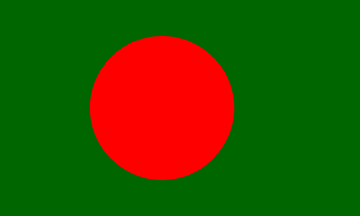
Rabindranath Tagore's poem written in 1906 titled Amar Shonar Bangla (My Golden Bengal!) is adopted by Bangladesh as its national anthem in 1972. The poem was originally written during the period of agitation against the Partition of Bengal. (Please click here to check out the role of the partition of Bengal in the struggle for India's independence LANGUAGE POLICY IN THE FORMATIVE YEARS OF INDIAN NATIONAL CONGRESS 1885-1905.
As I wrote there, "It was the decision of Lord Curzon to divide a linguistically homogeneous community into two religiously heterogeneous groups that was responsible in shaking off the lethargy that had set in, in the Indian National Congress as an organization. The organization and the masses at large throughout the length and breadth of India were galvanized into action by the partition of Bengal."
It should, however, be noted that there have been demands in the past, earlier than the actual partition of Bengal, for a separate administrative arrangement for the Muslim-majority territory that would protect the interests of the Muslims and help them achieve economic and educational progress. Ultimately, Bengal was united by the the annulment of Partition announced with a royal declaration in 1911was not a mere annulment restoring the status quo ante. While it united the West and East Bengal again into a single province, it created a separate Province of Assam and separated Orissa and Bihar from Bengal to form a third Province. In 1947, Bengal was again divided based on a referendum. In any case, a song that was written in praise of united Bengal, is now the national anthem of the new independent nation, Bangladesh.
The English translation of the anthem runs like this:
My Bengal of gold, I love you
Forever your skies, your air set my heart in tuneas if it were a flute.
In Spring, Oh mother mine, the fragrance fromyour mango-groves makes me wild with joy,Ah, what a thrill!
In Autumn, Oh mother mine,in the full-blossomed paddy fields,I have seen spread all over sweet smiles!
Ah, what a beauty, what shades, what an affectionand what a tenderness!
What a quiet have you spread at the feet ofbanyan trees and along the banks of rivers!
Oh mother mine, words from your lips are likeNectar to my ears!
Ah, what a thrill!
If sadness, Oh mother mine, casts a gloom on your facemy eyes are filled with tears!
(Official translation by Syed Ali Ahsan) http://banglapedia.search.com.bd/HT/N_0078.htm
A tribute to the natural beauty of the Motherland of Bangladeshis, this poem, unlike that of India and Pakistan, is clearly a glorification of the land, with no reference to any religious fervor. On the other hand, the anthem makes a declaration that the citizens of Bangladesh identify themselves with the joys and suffering of the people of the nation. This is an emotion-charged anthem, strangely with no direct and explicit reference to the language, Bangla. I believe that the term bangla should be taken to mean both the land and the language, but the translations in English do not carry this sense explicitly.
Rabindranath Tagore has a great distinction that his poems are national anthems of two nations.
National Anthem of Nepal
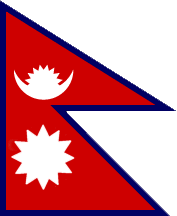
Nepal is changing rapidly, and the changes are reflected in the choice of the national anthem this year. Monarchy has lost its power and the people of Nepal have come to recognize the ethnic diversity and the diversity of their terrain. The national anthem was selected through a competition, which received over 1200 entries. The selected entry was by Pradeep Kumar Rai (with the pen name Byakul Maila).
ENGLISH TRANSLATION
We are hundreds of flowers, the one garland - Nepali
Sovereign, spread out from Mechi to Mahakali.
Amassing nature's millions of heritage
By the blood of the braves, independent and immovable.
Land of knowledge, land of peace, Terai hills, mountains
Undivided this beloved, our motherland Nepal.
Diverse race, language, religion, culture are so large
Our progressive nation, long live, long live Nepal.
Taken from http://david.national-anthems.net/np'.htm
"Land of knowledge, land of peace" reminds me of Siddhartha, who initiated a revolution within the Indian subcontinent and whose teaching continues to move the hearts and minds of people around the world. Much more explicit than the Indian national anthem, the anthem of Nepal stresses the diversity within Nepali society, even as this ancient land takes on the look of a progressive nation. The beauty of Nepal lies also in its bounteous natural settings, and the anthem clearly takes note of this fact. India and Nepal, true to their tradition, have subdued in their anthems any emphasis that outsiders may expect about religion in their anthems. Very sophisticated approach, indeed.
The National Anthem of Bhutan

In the Kingdom of Druk, where cypresses grow,
Refuge of the glorious monastic and civil traditions,
The King of Druk, precious sovereign,
His being is eternal, his reign prosperous,
The enlightenment teachings thrive and flourish,
May the people shine like the sun of peace and happiness!
http://www.bhutan.gov.bt/government/abt_nationalanthem.php
Bhutan's monarch is praised in the national anthem with the declaration that "the enlightenment teachings thrive and flourish." There is also the prayer or wish, "May the people shine like the sun of peace and happiness." According to the official statements, Bhutan's official religion is declared as follows: "Drukpa Kagyue school of Mahayana Buddhism is the state religion. Hindu is the dominant faith in the South. Some residues of Bon, animism and shamanism still exist in some pockets of the country." As a Buddhist nation with long traditions, the anthem makes a pointed reference to the nation as the "refuge of the glorious monastic and civil traditions."
Changes are in the air in Bhutan. Recent declarations of the Monarch indicate that the nation is moving toward parliamentary democracy, with the all-powerful role of the monarch taking on a mere symbolic role.
The National Anthem of Maldives
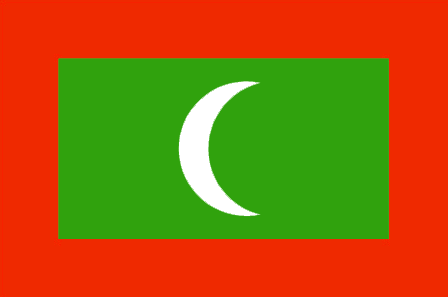
We salute you in this national unity.
We salute you, with many good wishes in the national tongue,
Bowing the head in respect to the national symbol.
We salute the flag that has such might;
It falls into the sphere of victory, fortune and success
With its green and red and white together, and therefore we salute it.
To those heroes who sought out honour and pride for the nation
We give salute today in auspicious verses of remembrance.
May the nation of the Maldivian Islanders advance under guard and protection
And the name of the Maldivian Islanders become great.
Thus we pledge as we salute.
We wish for their freedom and progress in this world
And for their freedom from sorrows, and thus we salute.
With full respect and heartfelt blessing towards religion and our leaders,
We salute you in uprightness and truth.
May the State ever have auspicious honour and respect.
With good wishes for your continuing might, we salute you.
The national anthem makes references to the history of the nation, and "pledge as we salute." It expresses it heartfelt blessing towards religion and leaders. This anthem is more on the history of the nation, indirectly repudiating efforts at division of the country. The anthem takes pride in its national tongue and the people Maldivian Islanders.
The National Anthem of Sri Lanka
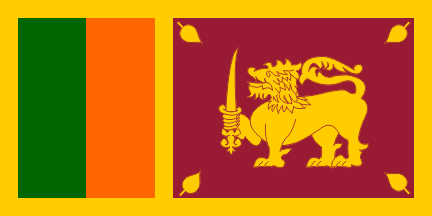
English Version
Mother Lanka we worship Thee!
Plenteous in prosperity, Thou,
Beauteous in grace and love,
Laden with corn and luscious fruit
And fragrant flowers of radiant hue,
Giver of life and all good things,
Our land of joy and victory,
Receive our grateful praise sublime,
Lanka! we worship Thee.
Thou gavest us Knowledge and Truth,
Thou art our strength and inward faith,
Our light divine and sentient being,
Breath of life and liberation.
Grant us, bondage free, inspiration.
Inspire us for ever.
In wisdom and strength renewed,
Ill-will, hatred, strife all ended,
In love enfolded, a mighty nation
Marching onward, all as one,
Lead us, Mother, to fullest freedom.
The national anthem was selected through a competition. Ananda Samarakoon wrote the poem in Sinhalese and the song is called Namo Namo Matha, Salute, Salute, (to you) Mother! The song is adopted as the national anthem on 22 November 1951. The national anthem is in the majority language of Sri Lanka, Sinhalese, and has been a subject of controversy with charges that the diversity of Sri Lanka is not reflected in it.
Whereas Nepal and India, two nations with ethnically and linguistically diverse people groups, have chosen to signify the solidarity with all the people groups, Sri Lanka chose/chooses to emphasize Sinhalese identity to the exclusion of others. Political ideologies certainly get reflected in the national anthems adopted.
PLEASE CLICK HERE TO READ THE ENTIRE ARTICLE IN A PRINTER-FRIENDLY VERSION.
National Anthems of South Asian Nations | Memorization - A Constraint for Integrating Critical Thinking Skills Into Indian ESL Classrooms | The Role of Dictionary in Language Learning | Language Processes of Branding, Patents and Trademarks in India |HOME PAGE OF JULY 2007 ISSUE | HOME PAGE | CONTACT EDITOR
M. S. Thirumalai, Ph.D.
Adjunct Teacher-Consultant
St. John's Nursery and Primary School
Tenkasi 627 811
Tamilnadu, India
mthirumalai@comcast.net
- Send your articles
as an attachment
to your e-mail to
mthirumalai@comcast.net. - Please ensure that your name, academic degrees, institutional affiliation and institutional address, and your e-mail address are all given in the first page of your article. Also include a declaration that your article or work submitted for publication in LANGUAGE IN INDIA is an original work by you and that you have duly acknolwedged the work or works of others you either cited or used in writing your articles, etc. Remember that by maintaining academic integrity we not only do the right thing but also help the growth, development and recognition of Indian scholarship.
